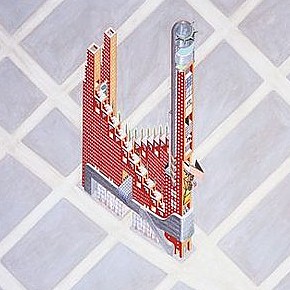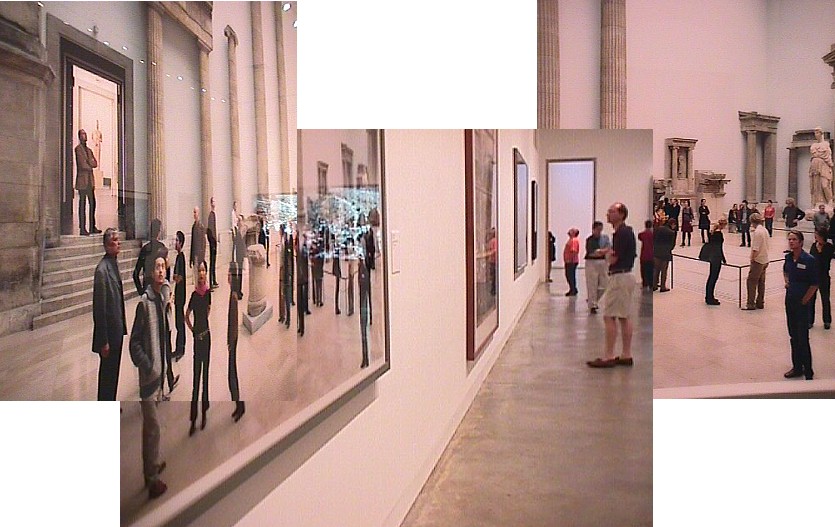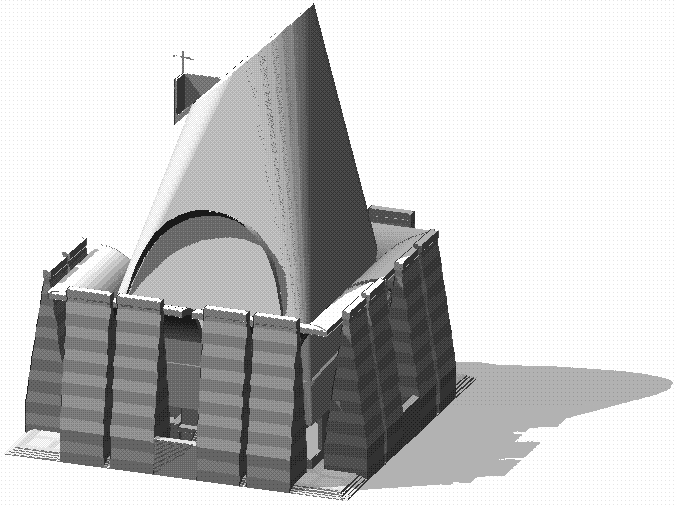2011.11.15 15:25
Rafael Viñoly on a Sunday
Yes, Orhan, it is an uneasy life where one's talent is also the cross one has to bear.
2011.11.14 20:00
Rafael Viñoly on a Sunday
I doubt there is any real difference between the situation of the world of architecture before the NYTimes piece and the situation of the world of architecture after the NYTimes piece. Also, assuming the Viñoly's lifestyle has been the same for quite some time, where was all the outrage before the NYTimes piece? In my eyes, it's the publicity that has struck a major nerve. If you want to change the publicity, hire a publicist.
There was a time (25 years ago) when I and my (3d cad) work received a lot of publicity--newspaper articles, public television spotlights, highlight of a major architecture exhibit--and, as it turned out, its overall effect was to make other architects jealous.
2011.11.14 13:04
Rafael Viñoly on a Sunday
Is "the serious work that architects are doing to make the world a better place" really so weak, unstable (or whatever the right word is) that a "vapid" NYTimes piece is able to undermine it?
Also, are most of the posts above part of "the serious work that architects are doing to make the world a better place?"
2011.11.14 10:07
Rafael Viñoly on a Sunday
How dare the Viñolys remind me that I'm bourgeois. And what a disgrace that they actually employ people.
2011.11.12 13:25
Importance of Hotel Sphinx (from Delirious New York)?
For a start, make sure you note that Hotel Sphinx (1975-76) is a design by Elia and Zoe Zenghelis, and the text on Hotel Sphinx within Delirious New York (1st edition, pp. 244-47) is also by Elia Zenghelis.

Roberto Gargiani in Rem Koolhaas/OMA: The Construction of Merveilles also nicely places Hotel Sphinx within the broader OMA and architectural context.
| |
2011.11.12 10:04
Quondam's Fifteenth Anniversary
I read Sanford Kwinter's "Mack 1 (and Other Mystic Visitations)" last night and early this morning. Back in mid-October 1997, instead of going to the opening of Guggenheim Bilbao, Kwinter and Reiser went to a reenactment--the fiftieth anniversary reenactment of Yeager's October 14, 1947 breaking of the sound barrier. Kwinter calls the event a "commemorative re-enaction, of perhaps the second most significant accomplishment in the history of twentieth-century space," and, because architects did not somehow latch on to this accomplishment (back in the late 1940s), late twentieth-century architectural accomplishments like Guggenheim Bilbao are not as important as they seem. Apparently, architecture missed the real Zeitgeist "boat," however, and most thankfully, a reenactment can come to the rescue.
After reading, a few things started entering my mind, like didn't John Hejduk's Silent Witnesses architecturally address this very Zeitgeist? It's hard to grasp the impact of Silent Witnesses by just the images within The Mask of Medusa, but I still vividly remember seeing the models in person at Cooper Union (Spring Break, 1977). Hejduk definitely did not miss the boat, or the submarine, or the lunar module.
And what was I doing 14 October 1997?
loss of direction and energy
1997.10.14
I have not yet been able to focus on any of my creative pursuits since Dad's death and funeral. I probably won't be able to really concentrate on anything until I get the house cleaned up. Suddenly, it feels like I have time to do anything, and it is hard for me to imagine a life free of worries and obligations. I probably just have to start on some projects, and just get things going that way. Actually, I have to get Novitski* off my back, and that might just change everything.
Ah yes, I was still just getting over my first experience of reenactment season.
Death and the Triumphal Way
1997.10.02 (sent to the Archithesetics list)
My father, Otto Lauf, died 24 September 1997. His death came after many years of battling diabetes and its complications, including the loss of both his lower legs. The Encyclopedia Ichnographica is dedicated to my father, for I was nearing completion of the Ichnographia Redrawn web pages the night he died.
My father's funeral was the third I had "watched" in a month, after those of Mother Teresa and Princess Diana, and it was during Diana's funeral that a remarkable coincidence occurred. On the Thursday before the Princess' funeral in London, I nonchalantly browsed through The Princeton Journal Ritual, 1983, a book I had not taken from my library in a number of years. I was soon surprised and delighted with the discovery of an essay on ancient Rome's Triumphal Way, "Passage into the City: The Interpretive Function of the Roman Triumph" by Alan Plattus. No doubt this essay would greatly aid my ongoing research of Piranesi's Ichnographia of the Campo Marzio within which Piranesi demarks his own interpretation of the Roman Triumphal Way. The essay carefully explains the often re-enacted ritual and the many "passages" along its way: the initial passage through the wall and into the city; the circuitous route through the numerous memorial arches that have been dedicated over time, and through the many stadia and circuses where the throngs of Roman citizenry could observe the spectacle; the ultimate end of the march at the Temple of Jupiter on the Capitoline Hill, ancient Rome's most sacred place. I finished reading the essay late Friday night.
On Saturday morning, I watched (in Philadelphia via television) Princess Diana's funeral procession on its way to Westminster Abbey. As her coffin passed various memorials, including Lutyen's Cenotaph at Whitehall, I immediately recognized the trappings of Empire. I next saw Diana's coffin pass beneath an arch, and I then realized I was "witnessing" yet another re-enactment of the Triumphal Way, ending this time at the most sacred place in London.
As always, the Triumphal Way is synonymous with heroes. My father was certainly a hero for me, and he last triumphed in 1994 when he re-learned how to walk with an artificial limb. Moreover, I find comfort in thinking that my father may have now already met not only Mother Teresa and Princess Diana, but Piranesi as well.
| |
2011.11.11 09:26
Quondam's Fifteenth Anniversary
@job job, "enjoyed" is a very nice complement. Thanks.
"...looking for the double theater that is probably even more there."

a virtual museum of [disinformation] architecture?
2000.01.08 13:48
John Young wrote:
Imaginary architecture, Escher, Piranesi, Heaven, Hell, visionary, virtual, has always mesmerized, inspired, perhaps terrified, for being beyond what is accompishable.
To be sure most architecture begins as imaginary and then it's all down hill from there as other brutally realistic forces have their way. Until ruins once again induce fantastic possibilities.
I especially admire Steve's fictional conference........
Steve Lauf continues:
Before going INSIDE DENSITY and while INSIDE DENSITY, the back of my mind was occupied with "what could a virtual museum of architecture be that a real museum of architecture could [or would] never be?"
Quondam presently comprises over 80 megabytes of data in the form of texts and images. As 'director' of Quondam, I'm hesitantly contemplating the (online) deletion of all the data in one keystroke. Seems drastic, but dia(meta)bolically desirable(!) -- kind of like pushing that big red button somewhere in Washington D.C., or where ever red buttons are.
Tabula Rasa is too easy, however. I prefer palimpsest, instead--erasure and then overwriting/overrighting. Of course, replacement would be necessary and necessary in quick order (...don't want those rising web stats to suddenly evaporate).
So what can a virtual museum of architecture be that a real museum of architecture can not be?
I'm at the point where the dissemination of disinformation appears the most appealing. I'm imagining a museum of architecture that curates and displays an 'un-real' history of architecture, you know, among OTHER things, all those buildings Le Corbusier designed since 27 August 1965, and likewise the dies sanquinis urbanism of lights-camera-Africa in 2056 AD which is covertly inspired by the OTTO-man architecture of pre-Christ South America, and don't forget the equinoctial architecture along the tropics of Cancer and Capricorn. Yes, http://www.quondam.com/ may well soon be a 'new and improved' virtual museum of [unscientific fiction] architecture, written and delineated in palimpsest (so the faded 'truth' is nonetheless incompletely 'not there').
I'm becoming more and more convinced that a virtual museum of architecture misses its full virtuality unless it 'calendrically incarnates' other zeitgeists + [or minus] architectures.

"Is this an Ideal City or what?"
"I see two museums, an almost church and a synagogue, but where's the mosque?"
 |